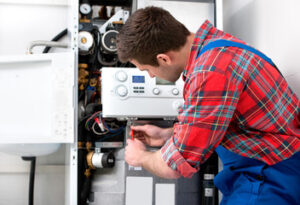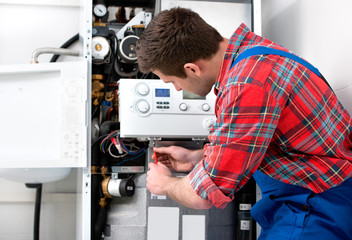With two major snowstorms sweeping the nation and inflation pushing energy prices to record highs, heating bills are rising. Fortunately, there are many things you can do to save on your heating bill.
For example, you can save on your heating bill by keeping curtains open during the day to allow sunlight to stream in and then closing them at night to trap the heat.

Insulation is one of the most important home improvements to reduce energy bills. The material prevents heat loss during the cold months and enables your heating system to work less often. It helps maintain a constant temperature throughout the house, so you won’t need to turn up the air conditioner during summer.
The type of insulation you choose and how much you install determines the efficiency of your home. There are many different materials and installation methods, but all rely on the same principle: to reduce unwanted heat transfer. The insulation specialists at REenergizeCO can recommend the right solution for your home and help you save money by increasing its energy efficiency.
Whether your home was built with the latest energy-saving standards, adding insulation can make it more comfortable and efficient. It also protects you from expensive repairs and replacements for your HVAC systems.
Newer homes are generally better insulated than older ones because building standards have improved. However, you can still add much value to your home by adding insulation and draught-proofing. Even small fixes like fitting an insulating jacket to your hot water cylinder can save you PS50 (PS40 in NI) per year in energy costs and 155kg (215kg in NI) of carbon emissions.
There are several ways to insulate your home; the most effective is to have it done by a professional. They can help you choose the correct thickness and R-value, determining how well it insulates. The higher the R-value, the more effective the insulation is.
Another benefit of insulating your home is that it can help you sleep better. Not only does it keep the temperature stable, but it also blocks out external noise, such as traffic, barking dogs, and birds. Having this peace when you come home is essential to relax.
Insulation doesn’t just help you save on your electricity bills; it can also lower your gas and fuel costs. It reduces reliance on other heating and cooling systems that consume large amounts of power, which benefits the environment. It can also protect against fires and act as a barrier against pests, such as wood-eating ants or termites.
A major question during winter is, “Does turning down the thermostat save money?” Depending on your energy habits, lowering your temperature can help you reduce your bills by as much as 10%. You have to be willing to get a little chilly.
According to the Department of Energy, heating accounts for up to 48 percent of your home’s energy consumption. So, it’s no surprise that this is one of the biggest areas where you can make some painless savings.
It’s important to remember that lowering your thermostat doesn’t reduce the energy your heater uses. Instead, it cuts back on the heat lost to the outside. When your house is warmer, it takes more energy for your heating system to replace that lost heat. But when you turn your thermostat down, the house isn’t as generous, so it requires less energy to stay comfortable.
The best way to save on heating bills is to keep the home’s temperature comfortable when you are at home and then turn it down for periods when you aren’t at the house (i.e. when you are sleeping or at work). You can also take it further and use a smart thermostat to do the heavy lifting and automatically reduce your home’s temperature.
Not only does this help you cut down on your energy bill, but it will also help the environment and improve your health. Studies have shown that if you lower your bedroom’s temperature to a reasonable level, you will fall asleep faster and enjoy a better night’s sleep than if the room is too warm.
To save on heating bills, the temperature in your home should be around 68 degrees while you are at home during the day and then drop to about 60 degrees during the night. You can also set your thermostat to a more moderate level at work or out of the house, known as a “setback” temperature.
During the winter, many homeowners try to keep their heating bills low by closing off rooms they do not use. This is a good idea since heating costs can quickly increase if you constantly turn the system on and off to warm or cool unused spaces in your home. However, shutting the doors to new spaces limits air circulation and does not save you energy.
Closing unused rooms does not cut your energy costs because it causes the heating and cooling system to work overtime to heat the rest of your home. Eventually, it leaks heated or cooled air out of closed rooms through cracks or gaps. This leaking air will cause your system to work even harder, and it can eventually damage your HVAC system.
It is a common belief that closing the doors to rooms that are infrequently used will improve energy efficiency by limiting airflow and forcing the space to stay warmer. This is a myth, and it will make your heating and cooling bills higher by causing your HVAC system to work overtime.
Instead of closing off unused spaces in your home, installing transfer grills to allow air to circulate freely between rooms is better. These are opaque and unnoticeable, and they can be installed into a door frame or next to it to provide a barrier-free way for air to move between spaces.
This method of preventing draughts also allows you to use your radiators in previously impossible spaces. This can help you save as much as PS115 per year, ensuring your home is warm throughout the winter. However, it is important to note that you should briefly leave your unused rooms unheated, as this can lead to internal problems in your home.
Understanding how draughts and poor insulation can affect your heating costs is important to minimize them as much as possible. If you need help improving the insulation in your Georgetown, Texas, home, contact us to discuss your options.
Air duct leaks are a major contributor to high energy bills. They allow conditioned air to escape into uninsulated spaces like attics, crawl spaces, and garages, which are then cooled or heated by the outside air. This wasteful energy use adds up quickly. A home with poorly sealed ducts can be up to 20% less efficient than one with well-sealed and insulated ductwork. This is why looking for duct leaks and getting them fixed as soon as possible is important.
Most of the time, leaking air ducts can be identified by visual inspection. Start by looking around the attic, crawl space, or basement. Check the ductwork for disconnected or sagging sections, holes, and tears. You should also pay special attention to areas where duct tape has been affixed, as this indicates that previous homeowners tried to patch leaks with it. This is not a permanent fix and should be removed to repair the ducts properly with mastic sealant.
Leaks in supply ducts can be easier to spot than those in return ducts. This is because leaks in the return ducts can pull conditioned air from unconditioned spaces, making it harder for your HVAC system to reach its set thermostat settings. This extra work will cost you higher energy bills, especially during hot and humid weather.
In addition to wasting energy, leaking ducts can lead to other problems in your home, including uncomfortable rooms and stuffy atmospheres. The escaped nonfiltered air also collects dust and other allergens throughout your house, which can be difficult to keep clean.
A professional can perform a more detailed duct inspection using tools such as a blower-door test and a duct blaster to detect leaks that are not obvious to the naked eye. In most cases, professional duct sealing will involve using an aerosol spray that can penetrate deep into duct joints and seams to seal them permanently. The result is a home that is more comfortable, energy-efficient, and safe from health concerns.
